Our Use Cases
Natural science associations and citizen science projects
-
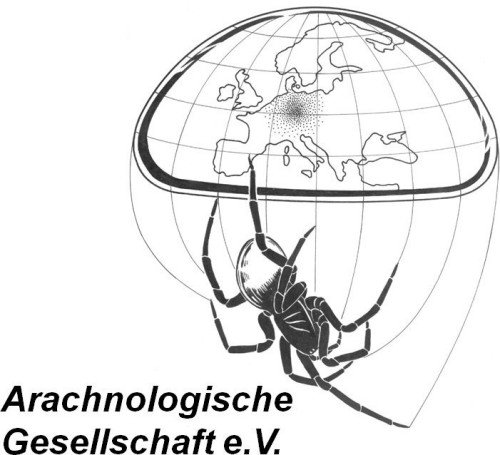
The Atlas of Arachnids of Europe of the Arachnological Society e.V. (Arachnologischen Gesellschaft e.V. (AraGes)) contains more than 2.7 million records of arachnid species; the arachnological database ARAMOB contains more than 80,000 species-specific study records. These data are to be brought into NFDI4Biodiversity in order to make them available in larger contexts and to be able to link them with other types of data (geodata, soil data, media). AraGes would like to see a permanent solution for the data management of professional societies and museums as well as a broad public availability of its own data. The main aim is to improve the data situation, among other things by offering data publication in the association's journal, the creation of a data management plan for the AraGes and the further development of arachnologically relevant thesauri and management tools in the working database Diversity Workbench. In addition, the linkage with other professional societies in NFDI4BioDiversity should help to improve citizen scientist reporting to the atlas database, e.g. records of arachnid species in Europe with habitat information and to facilitate data delivery from scientists to the ecological ARAMOB database.
Learn more about AraGes here.
Questions about this Use Case? Send us a message via our contact form.
-
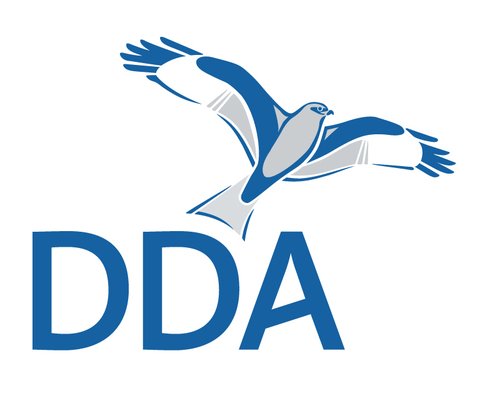
The Umbrella Association of German Avifaunists e.V. (Dachverband Deutscher Avifaunisten e.V. (DDA)) is the federation of all state-wide and many regional ornithological associations in Germany. It advises the Federal Ministry for the Environment, the Federal Agency for Nature Conservation and corresponding institutions of the federal states on technical issues concerning the conservation and protection of native biodiversity. Together with actors in biodiversity research, the DDA carries out scientific projects. In order to fulfill its aims, the DDA also organizes and coordinates the nationwide monitoring of breeding and resting birds and operates the online portal ornitho.de. In total, more than 50,000 volunteers provide more than 10 million observation data annually for the aforementioned purposes.
The goal of this use case is to make these extensive DDA data sets on the distribution and abundance of bird species usable for NFDI, to link them to other data sets, to connect them to the common NFDI infrastructure, and to be able to present them visibly to the research community as well as the public.
Learn more about the DDA can be found here.
Questions about this Use Case? Send us a message via our contact form.
-
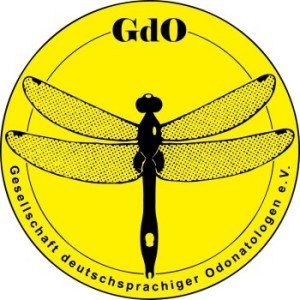
A detailed profile of the use case "Dragonfly species in Germany" can be found here.
The Society of German-speaking Odonatologists (Gesellschaft deutschsprachiger Odonatologen e.V. (GdO)) has more than 1.8 million species-specific data points on the distribution of the 81 dragonfly species recorded in Germany (as of 2021). Data collection, quality assurance and data management are carried out at the level of the federal states, whereby the reporters are mainly active on a voluntary basis. Coordination is partly carried out by the state nature conservation administration (for example in Schleswig-Holstein, Saxony and Bavaria), partly by voluntary working groups (for example in North Rhine-Westphalia, Hesse and Baden-Württemberg). In some federal states, individuals and several regional groups are also responsible (for example in Berlin and Mecklenburg-Western Pomerania). The data is constantly updated in all federal states, and the reports are quality-assured – a true treasure trove of data for practical nature conservation. Due to the decentralised data storage, however, it is not yet possible – neither as a data producer nor as a data user – to access the entire data stock. NFDI4Biodiversity is working on simplifying access. A data portal demonstrator was developed as the first concrete product that illustrates the added value of comprehensive access – a tool that allows dragonfly data to be visualised throughout Germany. Details can be found in the profile of the use case "Dragonfly species in Germany" linked above.
Learn more about the GdO here.
If you have any questions about the use case, please write to us using our contact form.
-
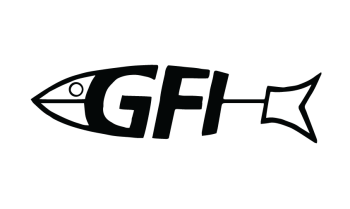
A detailed profile of the use case "Fish Species Atlas" can be found here.
The Society for Ichthyology e.V. (Gesellschaft für Ichthyologie e.V. (GfI)) is an association of fish scientists from science, fisheries and aquaristics. Since 1995, the GfI has been committed to promoting the scientific study of fish and provides a German-language forum for information, communication and publication in the field of fish science. Since 2003, the GfI, together with the Bremen University of Applied Sciences, has maintained the Fish Species Atlas for Germany, Austria and the Wadden Sea, which contains more than 100,000 records on the distribution of all regional freshwater and marine fish species. The GfI would like to share its extensive knowledge about the occurrence of the different fish species in order to contribute to their further research and protection. The aim of the collaboration in NFDI4Biodiversity is to make the data and tools (e.g. the recording option via app as well as data visualisations) also accessible to a broad user community from science, administration and environmental education and to link them to global databases. So far, the main work has been to make the database structure of the Fish Species Atlas compatible with the data infrastructure being created in NFDI4Biodiversity, so that regular bilateral data exchange is easily possible.
You can find out more about the GfI on the website of the association.
If you have any questions about the use case, please write to us using our contact form.
-
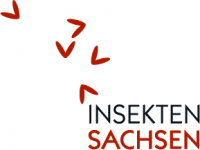
The project Insects Saxony (Insekten Sachsen) started in the Year of Biodiversity 2010 and is dedicated to the research of native insects. It aims to provide knowledge about native insects and invites interested people to participate in the research of Saxon insects. Insekten Sachsen offers data on insect observations as well as photos to verify species identification. Furthermore, historical data from collections and literature and current data in species-specific maps are provided. The project is interested in enabling the use of these data and providing a service for entomologists to make their data visible and usable. In the context of NFDI4Biodiversity the usecase aims to improve the standardization of data structures and to facilitate and automate data sharing. Furthermore, Insekten Sachsen is interested in incorporating data from other sources.
Find out more about Insekten Sachsen on the project website.
If you have any questions about the use case, please write to us using our contact form.
-

Naturgucker.de (translatable as nature watcher or nature gazer) is the largest information portal for nature observers in Germany. Over 100,000 volunteers participate in the project and have contributed more than 13,000,000 observations, including 1,600,000 on plants, 11,400,000 on animals and 160,000 on fungi (as of Sept. 2021). The observations have been documented with 2.4 million images of more than 44,000 species. Naturgucker.de is a strategic partner of NABU for Citizen Science. The data from Naturgucker.de is made available via an infrastructure on the web and via app. The goal of the cooperation in NFDI4Biodiversity is to strengthen the connections to other large observation platforms and to enable an improved data exchange. Naturgucker.de is already working closely with three other use case partners on data exchange: The Hessian State Agency for Nature Conservation, Environment and Geology (HLNUG), Saxon State Agency for Environment, Agriculture and Geology (LFULG) and Saxony-Anhalt State Agency for Environmental Protection (LAU). Together the partners are working on the creation of interfaces between the various platforms and nature conservation actors. Furthermore, Naturgucker.de would like to use the collaboration with NFDI4Biodiversity to promote its platform and its manifold application possibilities to a wider audience.
You can find out more about Naturgucker on the project's website.
If you have any questions about the use case, please write to us using our contact form.
-
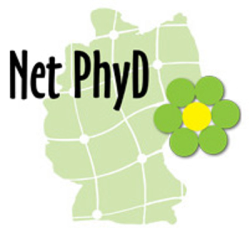
The association Phytodiversity Network Germany (NetPhyD) runs the website Deutschlandflora.de, which is a platform for the collection and analysis of floristic data (i.e. data on plant species). The association is actively involved in the consolidation of floristic data in Germany. NetPhyD is one of the citizen science projects in NFDI4Biodiversity and it has gathered data on about 30 million observations. There are different regional portals that use the infrastructure of Deutschlandflora, whereby each regional portal is and should remain the responsible rights holder of its data. As a use case of NFDI4Biodiversity, NetPhyD wants to improve its data sharing whilst protecting sensitive data, such as occurrence records of rare species. The association wants to provide distribution maps based on their observations and contribute towards stable and regular communication between data collectors in the field and data analysts (e.g. authorities, scientists, etc.). Furthermore, they are interested in access to cloud computing analyses.
You can find out more about NetPhyD on the association's website.
If you have any questions about the use case, please write to us using our contact form.
Research organisations and research projects
-
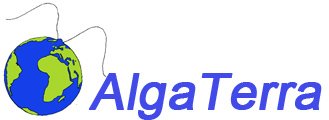
The AlgaTerra Information System links research data from natural history collections and clone cultures to molecular sequences of microalgae. The NFDI4Biodiversity use case project is about enabling the reuse of AlgaTerra's taxon-based factual knowledge through tools and services of cloud-based metabarcoding analyses. The AlgaTerra Information System contains curated data on scientific names, synonyms, and taxon concepts of diatoms (diatoms). Molecular and ecological as well as taxonomic information is presented within a data portal. Enriched by light and scanning electron microscopic images of diatoms from research projects and the German Barcode of Life project, the collected data are made available for scientific and conservation reuse.
You can find out more about AlgaTerra on the project's website.
-

In the Automated Multisensor Stations for Monitoring of BioDiversity (AMMOD) project, stations are being developed for automatic sampling of the environment. Similar to weather monitoring, the occurrence of various species is to be continuously recorded and evaluated here. The sensors automatically collect acoustic, visual and olfactory data as well as insects, pollen and spores. The aim of the use case project is to establish interoperability between AMMOD and NFDI4Biodiversity for the data collected in this way, to ensure the integration of further data (e.g. historical data, climate and traffic data) and citizen science project data, to enable comprehensive (interaction) analyses, to develop requirement catalogues for monitoring and to implement the harmonisation of components (development of thesauri and ontologies).
You can find out more about AMMOD on the project's website.
-

CRITTERBASE is a platform that manages marine biodiversity data and makes it available to users. It was developed by the Alfred Wegener Institute for Polar and Marine Research (AWI) and the Helmholtz Institute for Functional Marine Biodiversity (HIFMB). The task of CRITTERBASE is to make data from many different sources jointly and directly usable in one information system. Core criteria are a comprehensive data model (diversity of methods), strict quality control of all data, an up-to-date taxonomy, attractiveness of use for data providers, provision of a convenient interface for data users, traceability of development through archiving in PANGAEA, and adherence to the FAIR principles. Linking CRITTERBASE to the cloud-based data infrastructure being developed under NFDI4Biodiversity - the Research Data Commons (RDC) - will help make CRITTERBASE the core of a national information system for marine organism data. Currently, the fragmented data management of many institutions is an obstacle here, which NFDI4Biodiversity aims to overcome.
More about CRITTERBASE on the website for the software.
-
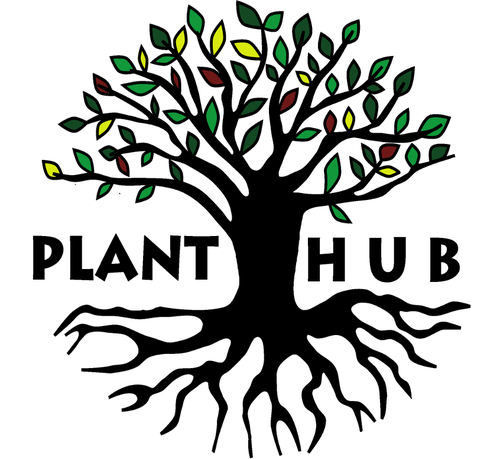
The aim of the PlantHub is to increase the visibility of research results and biodiversity data at the German Center for Integrative Biodiversity Research (iDiv) and its partner institutions, to promote the exchange of analytical ideas and methods, and to open up exciting access to the world of biodiversity data for non-scientists. To this end, 18 initiatives and collections form the basis of PlantHub, whose diverse information on plant biodiversity is to be made available, made visible and linked within the iDiv consortium and beyond. The results of these linkages will be made available on an online platform for all interested parties to discover and analyze the data. In the medium term, the storage of PlantHub data will run on the Research Data Commons (RDC) - the cloud-based data infrastructure developed in NFDI4Biodiversity. The experience in building data storage and presentation structures available in NFDI4Biodiversity is considered of great help in this regard. In return, PlantHub, with its community of closely networked scientists from the iDiv environment and the universities of Leipzig, Jena and Halle, will provide ideas for innovative use scenarios for combined data sets and corresponding analyses.
Find out more about PlantHub on the platform's website.
-
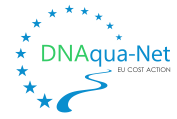
DNAqua-Net is a European network exploring DNA-based monitoring of freshwater ecosystems. Genetic methods are a useful extension for monitoring water bodies: Based on environmental DNA (eDNA), i.e. DNA traces left in the water, living organisms can be identified quickly, cheaply and comprehensively. DNAqua-Net members, specifically the University of Duisburg-Essen, have hundreds of these DNA and eDNA metabarcoding datasets. They provide valuable information about biotic communities, but have so far played a role almost exclusively in research. It would be possible to use them for biodiversity monitoring as well. Lack of data and analysis standards are currently key challenges. By participating in NFDI4Biodiversity, DNAqua-Net would like to offer its solutions and intuitive software tools to a wider audience.
More info on DNAquaNet on the project's website.
-
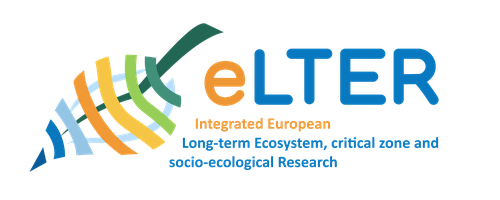
In collaboration with the European infrastructure eLTER, biodiversity datasets from long-term ecological monitoring will be fed into the cloud-based data infrastructure being worked on in NFDI4Biodiversity - the Research Data Commons (RDC). The integration of the German eLTER sites into NFDI4Biodiversity will allow data to be exchanged with little effort with the eLTER via NFDI4Biodiversity as the national node. The combinability of the high quality data collected over long periods of time with other data sources will also allow other NFDI4Biodiversity partners to benefit. The basic objectives of the use case are stated in terms of FAIR principles: Data must be discoverable, accessible, linkable, and reusable. In this respect, the eLTER use case serves the better understanding of biodiversity dynamics and the unified handling of metadata on a European level.
You can find out more about eLTER on the network's website.
-
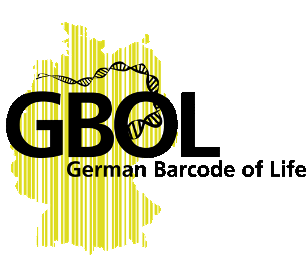
In the project "German Barcode of Life" (GBOL), marker genes that allow identification of organisms are recorded in reference libraries of all organisms in the world. The databases to date are largely established and 50-60% complete. In the third phase of the project, which is now underway, the "dark taxa" are being recorded. Metadata on the vouchers and the sequences will be stored in Relational Database Systems. Collection data management systems such as DiversityWorkbench are used to manage and update the information. ABCD-GGBN standard is used as the exchange format. All data are accessible through the Canadian Barcode of Life Data System (BOLD).
Taxonomic checklists (including Red List and Fauna-Flora-Habitat species) have been integrated. Search results are downloadable as CSV files in the GBOL portal. The use case project has several ambitious goals: First, GBOL data will be connected to the cloud-based data infrastructure - the Research Data Commons (RDC) - of NFDI4Biodiversity. Also planned are an interface for taxonomy checklists at different levels with Fauna-Flora-Habitat Directive and Red List categories, the extension of the GBOL IT infrastructure to include trait data, and an extension of the GBOL portal and IT infrastructure to include species identification functions (e.g. citizen science projects).
The goal of this use case is
- to connect GBOL data to the RDC,
- create an Application Programming Interface (API) for taxonomy checklists at different levels with Fauna-Flora-Habitat Directive and Red List categories.
- and to carry out the expansion of the GBOL IT infrastructure to include trait data, as well as that of the GBOL portal and the IT infrastructure for species identification (e.g., citizen science projects).
More about GBOL on the project website.
-
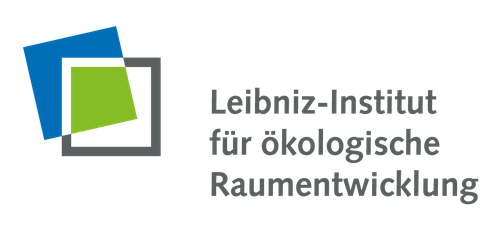
The Monitor of Settlement and Open Space Development (IOER Monitor) is a research data infrastructure of the IOER based on the combined processing of official geobasis, geospecialist and statistical data. From these data, 85 so-called indicators are derived, which in turn are divided into 14 thematic categories, including for example settlement, open space or transport. In a map viewer, land use, land cover and landscape quality as well as their changes can be displayed spatially, temporally and thematically in high resolution for Germany. "Land use changes are a basis for biodiversity, climate, sustainability and Earth system research," says Gotthard Meinel, head of the Spatial Information and Modeling research area at IÖR, about his motivation to participate in NFDI4Biodiversity. The goal is to integrate the data from the IOER Monitor into NFDI4Biodiversity. Other biodiversity data, for example on the occurrence of animal and plant species, could then be linked with data on soil types, sealing or settlement of land areas and put into perspective over different time periods in order to gain new insights into the drivers of biodiversity. In addition, the IOER would like to raise awareness of its data offering and is interested in receiving feedback on the functionalities of the IOER Monitor.
You can find out more about the IÖR Monitor on the platform website.
-

The Use Case Leibniz Institute for Regional Geography (IFL) focuses on developing spatial data visualization and communicating biodiversity-related data to different stakeholders. A particular interest lies in question regarding data transparency and different aspects of (visual) data interpretation. In this sense, the IFL Use Case has not had its own data but is rather contributing its expertise in questions regarding data visualization. The IFL has become a partner within the NFDI4Biodiversity project because questions regarding the visualization of data (e.g. handling of uncertainties and missing data) also apply to scientists when working with biodiversity data. On top of that, within the NFDI4Biodiversity project, the IFL tries to strengthen further the role of data visualization as a tool to develop new scientific questions and knowledge.
You can find out more about the IfL and the collaboration with NFDI4Biodiversity on the Institute's website.
If you have any questions about the use case, please write to us using our contact form.
-
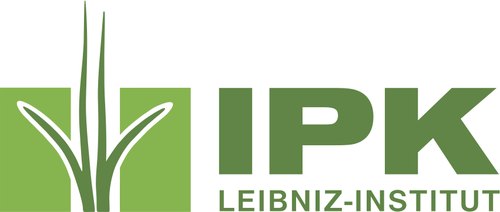
The use case project of the Leibniz Institute of Plant Genetics and Crop Plant Research (IPK) is about data on the genetic diversity of crop plants. The main goal of the project is to store and analyze molecular passport data of plant genetic resources in the Research Data Commons (RDC), the cloud-based data infrastructure of NFDI4Biodiversity. The molecular passport data ("diversity matrix") of selected accessions of the IPK genebank will be transformed into a data structure so that it can be stored in the RDC infrastructure and used as a basis for analyses. For example, a user has a "diversity vector" of a genotype of interest and searches for the most phylogenetically similar genebank material that originates from a particular geographic region or has certain characteristics. In the course of this work, concepts for tool conservation and reusability have already been published using the example of a developed Imputation Tools. In addition, IPK contributes to NFDI4Biodiversity by contributing its expertise in research data management and software development, as well as in setting up and operating IT infrastructures. The services offered by IPK will also be operated within the consortium beyond the project funding.
More about the IPK: www.ipk-gatersleben.de
-
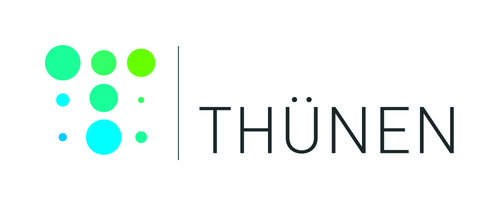
This use case project is about building bridges to agricultural sciences and the NFDI consortium FAIRAgro.
Agriculture plays an important role in the conservation and promotion of biodiversity: Around 50% of Germany's land is used for agriculture. However, there is still a lack of representative and scientifically reliable data for this area, which would allow us to make statements about changes in land use, agricultural structure and biodiversity and to evaluate the effectiveness of agri-environmental policy support instruments on biodiversity. The nationwide monitoring of biodiversity in agricultural landscapes (MinViA) is intended to close this gap in the future.
Scientists from the Thünen Institute and the Julius Kühn Institute, as well as the Federal Agency for Agriculture and Food, are developing monitoring programs in a five-year pilot phase (2019-2023) that will provide information on changes in the design of agricultural landscapes as well as on the status and development of functional groups such as pollinators, beneficial insects, pests, and soil (micro)organisms. In addition, the consortium is designing indicators relevant to agroecosystems and urgently needed to inform policymakers and the interested public about changes in agricultural landscapes.
As the coordinating institute, the Thünen Institute is committed to overarching data exchange within nationwide biodiversity monitoring. The Thünen Institute is a member of the FAIRagro consortium and contributes an open-source research data platform. This can be used as a reference implementation for FAIR data exchange and will be connected to the Research Data Commons (RDC), the cloud-based infrastructure developed in NFDI4Biodiversity, as part of the use case project. In the future, the data sets collected in MonViA will be stored in the reference implementation of an agricultural atlas used at the Thünen Institute, and the results will thus be made available to the public. In case of continuing the piloted monitoring programs, a FAIR data flow into the RDC would thus be ensured.
You can find out more about the Thünen Institute on its website.
Find out more about FAIRagro on the consortium's website.
If you have any questions about the use case, please write to us using our contact form.
Public authorities and National Parks
-
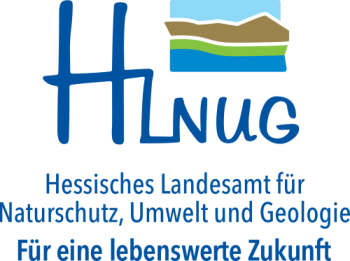
The Hessian State Agency for Nature Conservation, Environment and Geology (HLNUG) is one of three NFDI4Biodiversity use case projects in cooperation with state agencies. Together with the Saxony-Anhalt State Agency for Environmental Protection (LAU), the Saxony State Agency for the Environment, Agriculture and Geology (LfULG) and Naturgucker.de, HLNUG aims to promote data exchange among state agencies and with other conservation stakeholders and biodiversity data owners. The main focus of this use case is on the biodiversity data collection software MultibaseCS, which is used beyond the state agencies by many official nature conservation actors in Germany. As part of NFDI4Biodiversity, existing interfaces will be updated and, if necessary, new interfaces will be created between this collection software and the NFDI4Biodiversity Research Data Commons, the cloud-based data infrastructure for collaborative work with biodiversity data. This work is intended to open up new data sources and promote interconnectivity between existing data sources. As a first step toward this improved bidirectional data exchange, HLNUG and its partners are currently developing minimum data standards for species occurence data.
You can find out more about the HLNUG on the website of the state office.
If you have any questions about the use case, please write to us using our contact form.
-
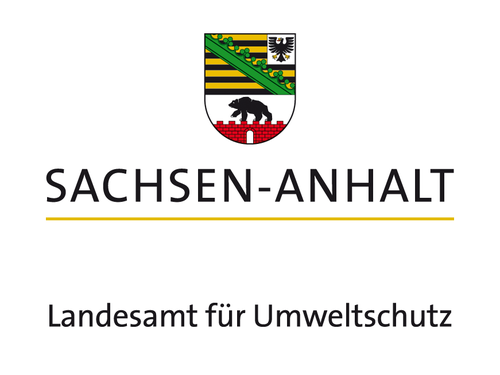
The Saxony-Anhalt State Agency for Environmental Protection (LAU) has different kinds of biodiversity data, including animal species data (MultiBaseCS databases), plant species data (WinArt databases) and data on flora-fauna habitat types (BioLRT databases).
Together with the Hessian State Agency for Nature Conservation, Environment and Geology (HLNUG) and the Saxon State Agency for Environment, Agriculture and Geology (LfULG) and Naturgucker.des, LAU aims to foster exchange and collaboration among the state agencies and with the NFDI4Biodiversity network. At the center of these use cases is the biodiversity data collection software MultibaseCS, which is used beyond the state offices by many official nature conservation actors in Germany. LAU and its partners are interested in developing cross-state data standards and workflows to simplify data exchange whilst complying to data protection regulation. This will not only allow them share official data more easily but also to gain access to new data sources (e.g. citizen science projects).
You can find out more about the LAU on the website of the LAU.
If you have any questions about the use case, please write to us using our contact form.
-

In the Bavarian Forest National Park use case, the focus is on "multitaxon" data - data that relates not just to one species, but to many species occurring in a particular area. Data collection is done using insect traps and photo cameras. In addition, environmental factors such as microclimate and forest structure are recorded. NFDI4Biodiversity supports the national park in data management by providing an instance of the BEXIS2 information system hosted by the University of Jena.
As part of the use case, solutions for data storage are being tested from which other national park administrations can also benefit. In this way, the valuable long-term data can also be made available to other interested parties, such as researchers. With the provision of a BEXIS2 instance by NFDI4Biodiversity and the successful mobilization of the data in the BioKlim project of the national park, a main goal of the use case has already been achieved. The National Park is also a member of the LTER-D network, through which data from long-term observations are exchanged with the European research infrastructure eLTER RI via the further NFDI4Biodiversity use case eLTER.
You can find out more about the Bavarian Forest National Park on the website of the park administration.
-
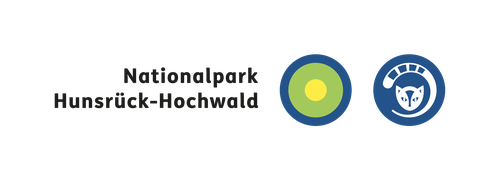
The Hunsrück-Hochwald National Park operates a research server for the national natural landscapes in order to provide the interested professional public with information on activities, projects, publications and available data for so far four national parks (Hunsrück-Hochwald, Hainich, Black Forest and Eifel). Among other things, metadata are published on studies that have taken place on the territory of the participating national parks. However, the metadata on the research server only refer to the measurement data. Most of the associated data resides with the research organizations conducting the studies. Therefore, one goal of the use case is to make these data available as well. In addition, data that the national parks collect themselves as part of their research mission will be made accessible. In NFDI4Biodiversity, the Hunsrück-Hochwald National Park Administration would like to help design interfaces to existing research data systems, integrate information from other organizations' databases into its work, and make its data publicly available. It is also interested in the cloud-based data infrastructure being created in NFDI4Biodiversity - the Research Data Commons (RDC) - for future data management.
You can find out more about the Hunsrück-Hochwald National Park on the website of the park administration.
If you have any questions about the use case, please write to us using our contact form.
-
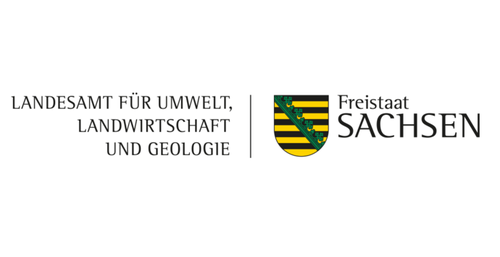
The use case of the Saxonian State Agency for the Environment, Agriculture and Geology (LFULG) is closely related to the other use cases with state agencies (i.e. Saxony-Anhalt State Agency for Environmental Protection (LAU) and Hesse State Agency for Nature Conservation, Environment and Geology (HLNUG)) and to Naturgucker.de. The particular focus of the LFULG use case is on developing minimum data standards that enable simplified bidirectional data exchange between authorities and nature conservation stakeholders. Within NFDI4Biodiversity, these standards will be co-developed with the other federal states. The main commonality between the use cases is the biodiversity data collection software MultibaseCS, which is used beyond the federal state agencies by many official nature conservation actors in Germany. The LFULG is interested in developing software interfaces using the minum data standards to significantly simplify and standardize data exchange. Through this process, the LFULG aims to gain access to new data sources (e.g. citizen science projects). Furthermore, this will allow for easier sharing of the official data with interested users.
You can find out more about the LFULG on the website of the state office.
If you have any questions about the use case, please write to us using our contact form.
-
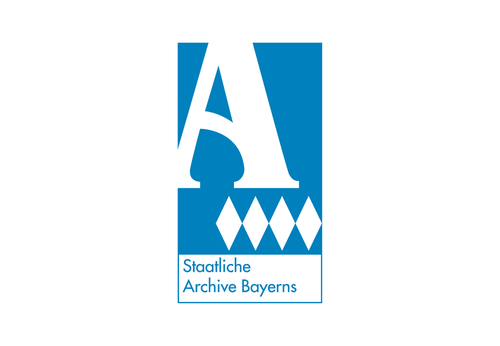
The General Directorate of the archives of Bavaria State is the central authority for archives in Bavaria. It is responsible for the fundamental and cross-sectional tasks of the Bavarian State Archives. This includes the management and coordination of central specialized tasks such as evaluation, acquisition, ordering and indexing of analogue and digital archival materials according to uniform principles, preservation, IT and digital archives, historical-political educational work (e.g. exhibitions and publications) as well as training and continuing education for the Bavarian archival service.
Nine state archives are subordinate to the General Directorate: the Bavarian Main State Archives and the state archives in Amberg, Augsburg, Bamberg, Coburg, Munich, Nuremberg, Landshut and Würzburg. The holdings stored in the state archives range from the early Middle Ages to the present day and cover all areas of state administration. Due to the broad spectrum of their holdings and close cooperation with the offering agencies of the Free State of Bavaria, the Archives of Bavaria State can contribute various historical and current data on biodiversity research to the NFDI4Biodiversity consortium. Examples include early descriptions of forestry and agriculture, documents and data collections of modern state administration, such as those of the forestry offices, or current data from the agricultural, surveying and environmental administration.
A logical archiving interface for such biodiversity data is to be designed in a joint model project with the Bavarian Natural History Collections (SNSB). The goal is the evaluation, automated transfer, structuring, digital indexing and metadata enrichment of the data and their connection to the joint GFBio portal of the NFDI4Biodiversity. Persistent Identifier (PI) and the ABCD standard guarantee the best possible data quality for researchers.
More information can be found on the Website of the State Archives of Bavaria.
Details of the archives' holdings can be found via the Findmitteldatenbank.
If you have any questions about the use case, please write to us using our contact form.
Explore three Use Case projects in more detail
What exactly does the cooperation between the use case partners and NFDI4Biodiversity look like? We present three of the projects in more detail as examples.
Society of German-speaking Odonatologists e.V. (GdO)
How exactly does the cooperation between the use case partners and NFDI4Biodiversity work? Our focus pages offer exciting insights.
Society for Ichthyology (GfI)
The GfI fishologists have more than 100,000 data sets on the distribution of all regional species. Together we are working to make this valuable knowledge more accessible - so that it can benefit the protection of fish fauna, among other things.
IOER Monitor
Visualisable long-term data on land use and land cover can enrich biodiversity research enormously. We are working with the Leibniz Institute for Ecological Spatial Development (IÖR) to integrate the data from the IÖR Monitor into NFDI4Biodiversity.